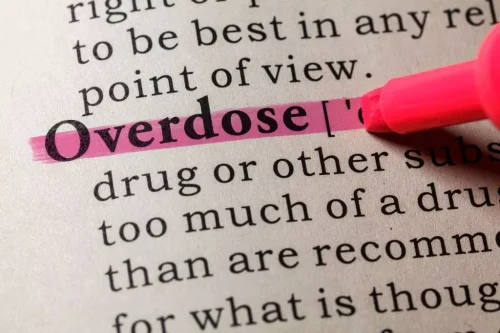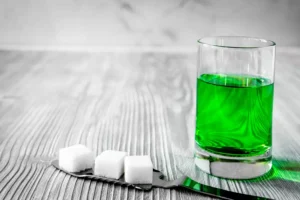How Alcohol Impacts the Brain Northwestern Medicine

This cumulatively increases levels of circulating pro-inflammatory cytokines which can cross the blood brain barrier (BBB) and cause inflammation in the brain [82]. Detox will clear the alcohol from your system, helping your brain to re-achieve balance. Dopamine production will return to normal, and other parts of the recovery program will offer things that will help your brain boost dopamine levels without chemicals. Therapy sessions will teach you coping techniques to deal with the triggers that fuel drinking.
Publication types
A study released on August 2, 2013 found that those who are energized by alcohol have a hyperactive dopamine response to alcohol and are genetically predisposed to drink more heavily. A small study by researchers at Columbia University revealed that the dopamine produced during drinking is concentrated in the brain’s reward center. The study further found that men exhibit a greater release of dopamine when they drink than women. Successively higher levels of organization integrate the various functions of adjacent groups of neurons.

Pain and reward circuits antagonistically modulate alcohol expectancy to regulate drinking
- The axons of the neurons in the raphe nucleus extend, or project, throughout the brain to numerous regions with diverse functions.
- Neurobiologically, striatal dopamine alters intracellular signaling that affects synaptic plasticity [42].
- In a retrospective study of 151 schizophrenic patients with alcohol dependence, 36 patients received the atypical antipsychotic medication clozapine.
- On one side of the screen, the patient saw one number, a “sure bet.” If the study participant selected the sure bet, they would “win” that amount.
Alcohol works on the brain to produce its desired effects, e.g., sociability and intoxication, and hence the brain is an important organ for exploring subsequent harms. On top of that are peripheral factors that compound brain damage such as poor diet, vitamin deficiencies leading to Wernicke-Korsakoff syndrome. Prenatal alcohol exposure can also have a profound impact on brain development and lead to irremediable changes of fetal alcohol syndrome. This chapter briefly reviews aspects of these with a particular focus on recent brain imaging results. Cardiovascular effects of alcohol that lead to brain pathology are not covered as they are dealt with elsewhere in the volume. Over time, excessive drinking can lead to mental health problems, such as depression and anxiety.
- This coherent FC relationship across AB tasks is also consistent with the significant correlations between behavioral measures of AB.
- The characteristics of this disorder include loss of control over alcohol intake, impaired cognitive functioning, negative social consequences, physical tolerance, withdrawal and craving for alcohol.
- Furthermore, rats undergoing intermittent access to 20% alcohol in 2 bottle choice paradigm exhibit distinct profiles of intake ranging from low alcohol consumers to rats that exhibit slow or rapid escalation of excessive drinking [125].
- Further, protein translation plays a role in additional alcohol-dependent phenotypes (Figure 1).
- Albeit the data are somewhat contradictory, it might be hypothesized that accumbal as well as ventral tegmental dopamine D2 receptors may regulate alcohol reinforcement in rodents.
Serotonin’s Functions in the Brain

Anything you enjoy, including those risk-taking activities, can cause increased dopamine levels. 1Throughout this article, the term “alcohol abuse” is used to describe any type of alcohol consumption that causes social, psychological, or physical problems for the drinker. Thus, the term encompasses the clinical diagnoses of alcohol abuse and alcohol dependence as defined by the American Psychiatric Association. does alcohol produce dopamine Instead, serotonergic neurons are parts of larger circuits of interconnected neurons that transmit information within and among brain regions. Accordingly, some of the serotonin-mediated neuronal responses to alcohol may arise from interactions between serotonin and other neurotransmitters. Two key neurotransmitters that interact with the serotonergic system are gamma-aminobutyric acid (GABA) and dopamine.

Neurotransmitters in alcoholism: A review of neurobiological and genetic studies
In addition, microdialysis studies in freely moving outbred rats show a decreased dopamine output in the NAc, compared to age‐matched alcohol‐naïve controls, following 7 weeks [104] and 10 months [29] of voluntary alcohol consumption. Furthermore, after 10 months of drinking, a blunted dopamine response following a systemic alcohol challenge has been found in long‐term drinking, compared to alcohol‐naïve rats [29]. These results indicate that long‐term drinking attenuates the responsiveness of the system to external dopamine stimulation, in addition to decreasing baseline levels of dopamine. Advances in neuroscience continue to shed light onto regulatory mechanisms relevant for alcohol use. A striking example is the discovery that certain neurotransmitters, such as serotonin [109] and dopamine [110], can covalently bind to histones and act as epigenetic marks to regulate gene expression. Histone dopaminylation was further shown to influence addiction-like behaviors in the context of cocaine exposure in mice [110].
- In addition to structural alterations, evidence suggests that chronic exposure to alcohol can lead to functional dysregulation of key brain systems that control behaviour such as reward processing, impulse control and emotional regulation.
- The study concludes by stating that it was the 1st time that such an association was found with the stated polymorphism and AD.
- Importantly, the neurobiological basis of AUD appears in many cases to manifest in a sex-specific manner.
- This information is critical for development of alcohol regulation and abuse prevention.
This stimulation method is nonspecific and activates all axons and neurons near the stimulus electrode, including cholinergic interneurons. Thus, it is possible that electrically stimulated dopamine release could be due to several effectors beyond depolarization of the dopamine terminal. Indeed, a major role for nAChRs on dopamine terminals in regulating dopamine release has been demonstrated in rodents [53,54,55,56,57]. This disynaptic mechanism involves acetylcholine released from cholinergic interneurons activating nAChRs on dopamine axons to induce dopamine release. Thus, any changes to cholinergic signaling in striatum might also influence changes in dopamine release. Indeed, a recent study examining optogenetically evoked dopamine release in mice found no change in dopamine release in the NAc core and medial shell following chronic alcohol treatment, suggesting that the chronic alcohol effect may be due to mechanisms upstream of the dopamine terminal [58].
Recent Advances in Drug Addiction Research and Clinical Applications
- In humans, for example, the levels of serotonin metabolites in the urine and blood increase after a single drinking session, indicating increased serotonin release in the nervous system (LeMarquand et al. 1994a).
- At the behavioral level, alcohol intoxication has been shown to increase risky behaviors such as risky driving, criminal behavior, and sexual promiscuity [108], whilst trait impulsivity has often been found to be increased in alcohol dependent individuals [109].
- Alcohol alters NMDA and metabotropic MGlu5 receptors thus interfering with glutamate transmission.
- Serotonin also may interact with additional neurotransmitters that have been found to contribute to alcohol’s effects on the brain.
- Serotonin also modulates the behavioral response to unfairness.[48] Most of the drugs used to treat depression today work by increasing serotonin levels in the brain.[49] The image below, shows, the regions of the brain where serotonin reaches [Figure 3].
Level 6: The role of posttranslational modifications
